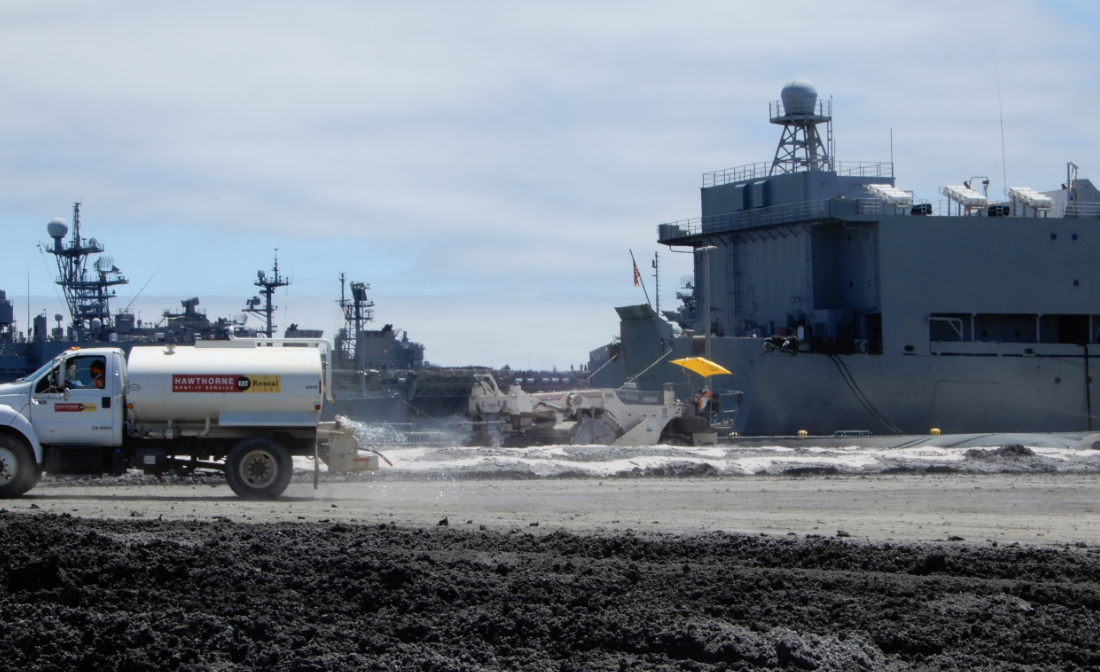Project Description
Maintenance dredging of 5 NBSD Piers. Processing approximately 47,000 cy of dredge material containing radiological objects and munitions and explosives of concern in an upland confined drying facility. Dutra designed a facility to handle identifying and isolating RO’s and MEC objects and tracking them through manifests. Once the final gamma walkovers indicated that all objects were isolated and removed, The Naval radiological compliance agency RASO approved the Gamma data from each 2,000m2 pad so Dutra could truck that material off to a local land fill. Managing a subcontractor certified in handling radiological objects and munitions and explosives of concern was crucial piece of the project.
Major Challenges
There was a major risk taking on a guaranteed unit price in this design/build project.
Project Scope
The scope of all the processes involved started with dredging the impacted areas. That material had to be loaded through two screening processes on two barges. The final dredge screening was a 3” grid. The material was then relegated to a much smaller explosive arc that could be easily managed in the confined drying facility where it was offloaded. That initial wet mud was then treated with quicklime to facilitate quick drying. When the material was dry enough it was put through a ¾” power screen. That process as well as the larger 12” and 3” screens on the scows created a debris stream that was checked for RO’s and MEC. The screened material was then laid out on pads with very specific dimension requirements. A sensitive gamma walkover instrument was then towed across every inch of those pads to determine if any small RO’s went through the screens. Once those gamma walkover data packages were developed, they were sent to RASO for approval. Once approved, the pads are stripped and the material was trucked to a local landfill. The debris was checked by hand, all MEC was either demilitarized or blown up. The radiological objects we put into sealed and manifested drums to be transported to a proper receiving facility.

